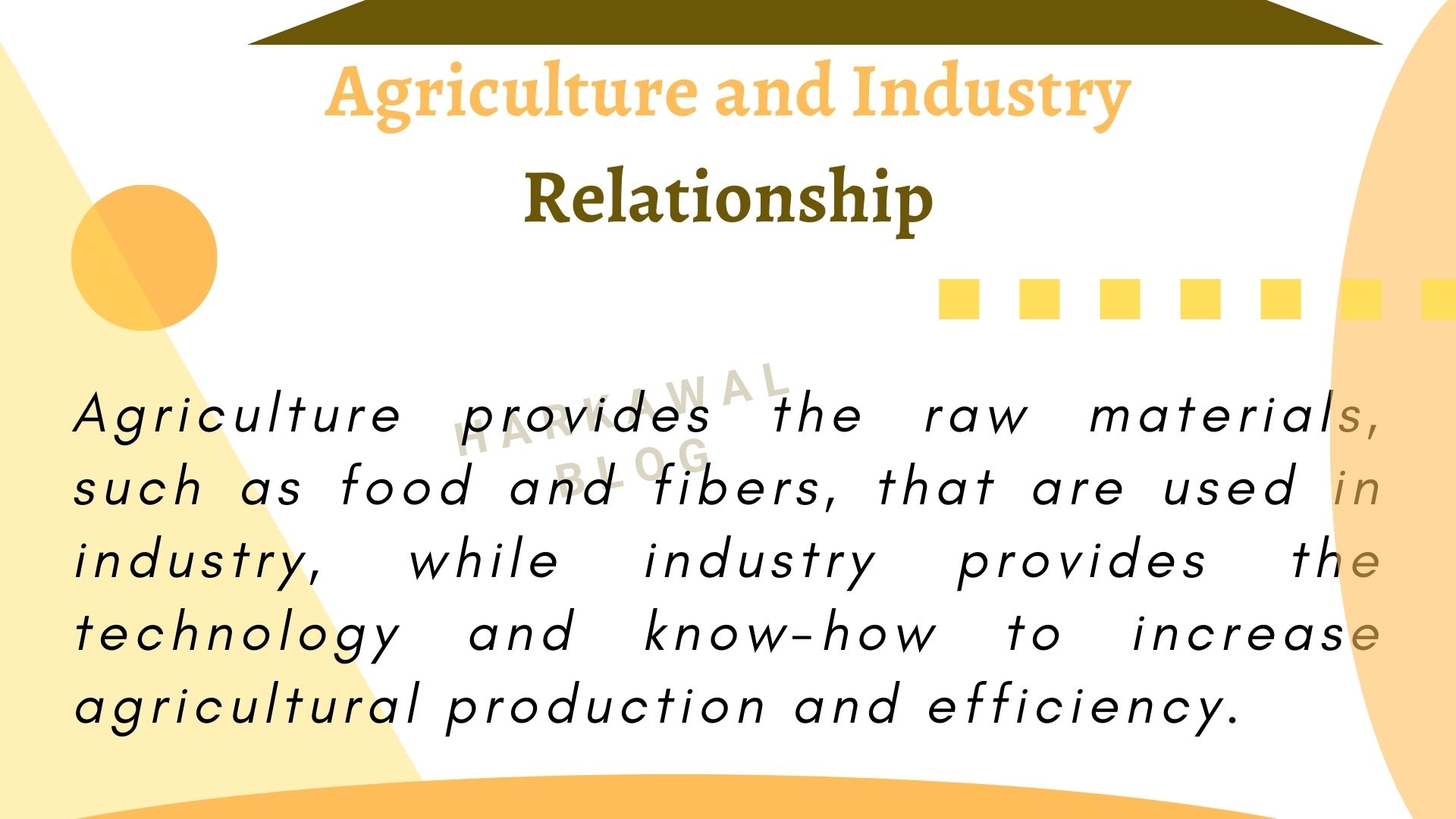How agriculture and industry move hand in hand
Agriculture and industry relationship
 Agriculture and industry have a long-standing relationship that has been essential to the development of modern societies. Agriculture provides the raw materials, such as food and fibers, that are used in industry, while industry provides the technology and know-how to increase agricultural production and efficiency. This relationship is increasingly important as the world’s population continues to grow, and the demand for food, energy, and other resources continues to increase.
Agriculture and industry have a long-standing relationship that has been essential to the development of modern societies. Agriculture provides the raw materials, such as food and fibers, that are used in industry, while industry provides the technology and know-how to increase agricultural production and efficiency. This relationship is increasingly important as the world’s population continues to grow, and the demand for food, energy, and other resources continues to increase.
Agriculture has a direct effect on industry by providing raw materials that can be used in the production of goods. For example, the cotton and wool fibers used in the clothing industry are produced by agricultural workers. In addition, the food industry relies heavily on the agricultural sector for the production of grains, fruits, vegetables, and other food products.
Industry, in turn, has a direct effect on agriculture by providing the technology that enables farmers to increase their yields and efficiency. New technologies, such as global positioning systems, automated harvesting equipment, and genetically modified crops, are all examples of how industry has advanced the agricultural sector. Furthermore, the industrial sector provides the infrastructure necessary for the transportation and distribution of food products.
The relationship between agriculture and industry is also important in terms of the environment. Agricultural production has an impact on the environment, both through the use of chemical fertilizers, pesticides, and herbicides, and through the clearing of land for farming. Industry can help reduce the environmental impact of agriculture by providing more efficient technologies, such as irrigation systems and water-conserving practices. Furthermore, industry can provide the necessary support for agricultural producers to use renewable energy sources, such as solar and wind power, to reduce their reliance on fossil fuels.
The relationship between agriculture and industry is a critical part of modern society. By providing the raw materials necessary for industry and the technology necessary for agricultural production, the two sectors are essential to the health and development of our global economy. As the population continues to grow, and the demand for resources increases, it is important that both sectors continue to collaborate in order to ensure a secure and sustainable future.
How agriculture and industry move hand in hand:
Agriculture and industry have been intertwined since the beginning of human civilization. As industrialization has increased, the need for agricultural products has grown exponentially, and the two sectors have become increasingly dependent on each other. In order to understand the relationship between agriculture and industry, it is important to understand the ways in which they both contribute to the economy.
Agriculture is essential for providing food and raw materials to the world. It is the process of cultivating crops and keeping livestock in order to provide food, clothing, and other necessities for humans. Agricultural products are the foundation of the global food chain, and have been essential for human survival since the dawn of civilization.
Industry, on the other hand, is the process of creating goods and services through the use of technology, equipment, and manpower. It is an important contributor to economic growth and development, as it increases the production of goods and services. Industries are also important for providing jobs and income to people, as well as providing a market for agricultural products.
The relationship between agriculture and industry is complex and mutually beneficial. The industrial sector is heavily reliant on agricultural production; agricultural products are used as inputs for the production of goods, and the industrial sector provides markets and employment opportunities for agricultural workers. Furthermore, industrialization has led to the development of technology and infrastructure which has improved agricultural productivity and enabled farmers to access new markets.
The agricultural sector is also heavily reliant on the industrial sector; industrialization has enabled the production of agricultural inputs and equipment, as well as the development of infrastructure which has improved connectivity between farmers and markets. The industrial sector also provides employment opportunities for agricultural workers, and has enabled the development of transportation systems which have increased the efficiency of agricultural production.
Overall, agriculture and industry are closely intertwined and their relationship is mutually beneficial. Without the industrial sector, agricultural production would be limited and inefficient, and without the agricultural sector, the industrial sector would suffer from a lack of inputs. Together, they have enabled the development of the global economy and have been instrumental in improving the quality of life for people around the world.
